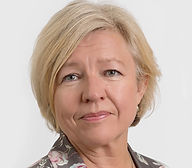

Marja-Leena Juntunen
For children, body movement is a natural way to respond to music, to experience it, and to learn about it. Recently there has been an increasing interest in music education practices to apply body movement. There is also a growing number of studies to understand the role of movement for (musical) learning, which hold that learning processes and body movements are inextricably bound. Within music education, using movement is a way to enhance embodied learning.
Embodiment has become a key concept in many disciplines like the cognitive sciences, sociology, philosophy, and psychology. The phenomenological notion of embodiment emphasizes the holistic
understanding of the human being and the embodied ways of knowing. Understanding learning from
the embodied perspective avoids the distinction between perceiving, thinking, and acting and asserts that in learning they all work in close interaction and affect one another. Learning is influenced by thought, emotion and bodily experience alike. Embodied learning is learning based on and from lived experience of interaction of self with the physical and social environment.
In my keynote, I will examine how children learn music through body movement in Dalcroze-inspired music education, which develops above all bodily knowing of music. The role and quality of movement and embodied experience in such education will be discussed. Examples of Dalcroze teaching with children will be demonstrated through video recordings, and the practical ways in which children’s embodied learning can be enhanced will be discussed, paying attention to that in musical learning, interaction and social relationships play a crucial role. Also, a number of studies that investigate the use and role of body movement in music teaching and learning will be reviewed.